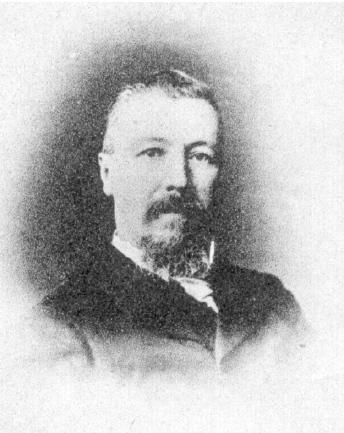
When contacting us by e-mail, correspondents are asked to include their name and full postal address and, when providing information, to quote exact book and magazine sources. The word ‘chess’ needs to appear in the subject-line or in the message itself.
| First column | << previous | Archives [29] | next >> | Current column |

Joseph Henry Blackburne
From a six-board blindfold display:
1 e4 e5 2 Nf3 Nc6 3 d4 Nxd4 4 Nxd4 exd4 5 Qxd4 d6 6 Nc3 c6 7 Bf4 Be6 8 O-O-O Qb6 9 Qd2 Rd8 10 a3 Be7 11 Be3 Qa5 12 Nb1 Qc7 13 Bd3 Nf6 14 h3 Nd7 15 f4 Nc5 16 Bxc5 dxc5 17 Qe3 h6 18 e5 O-O 19 Nd2 Rde8 20 g4 f6 21 Qe4 f5 22 Qe3 fxg4 23 hxg4 c4 24 Bg6 Rd8 25 f5 Bg5
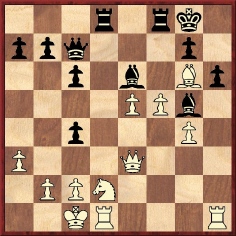
26 Qxg5 hxg5 27 Rh5 Qxe5 28 Rdh1 Qe1+ 29 Rxe1 Resigns.
The game was given on page 130 of the Chess Review, March 1893, with notes from the Glasgow Herald. The annotation regarding Black’s 27th move did not mention the possibility of 27...Bd5 but stated: ‘Making the game hopeless for Black. Black’s best move, as pointed out by Mr Crum, was RxBP.’
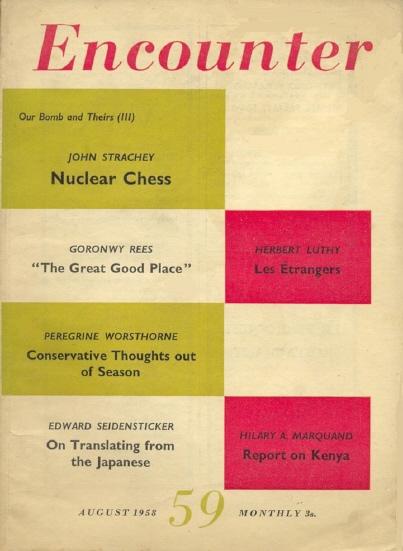
Chess was invoked for purposes of analogy in an article entitled ‘Nuclear Chess’ by John Strachey on pages 3-6 of Encounter, August 1958. It concerned the thesis of Russian aggression against the West if Russia considered that it had achieved nuclear parity:
‘It is as if, in a game of infernal chess, the two queens, i.e. the thermonuclear weapons, had been swopped at the very outset. Then, with the queens thus cancelled, the players enter into what I believe is called “the middle game”, but played, in this case, only with pawns and main pieces, i.e. conventional forces with or without tactical, or “battlefield”, nuclears. At present the Russians probably have superiority for this middle game without the thermonuclear queens.
Moreover, to pursue the chess analogy (which I do with great diffidence, being no chessplayer), there is also what I understand is called the “pawn game”. In this game, already in active play, the players clash essentially through their pawns. For this pawn game, also, conventional and not thermonuclear forces are the relevant factor.
In logic there is clearly only one Western reply to this situation, and that is to make ourselves capable of self-defence on the conventional, “middle game” level ...’
Has there been any truly successful writing which has drawn on analogies between chess and warfare?
A photograph from page 119 of the July-August 1931 American Chess Bulletin:
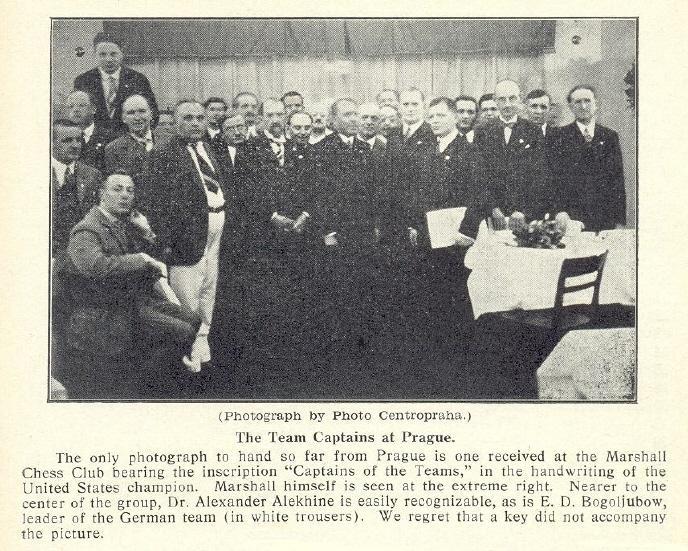
A brief paragraph about linguistic skill on page 49 of Wonderful world of chess (‘Chess press, Munchen’) by Dimitrije Bjelica compared ‘Ben Larsen’ to ‘Johanes Zukertot’ and concluded: ‘But Larse favourite player was not Zukertot but Nimzovic.’
Olaf Teschke (Berlin) writes:
‘On 5 August 2006 the Ostsee-Zeitung gave a sketchy biography of Hermann von Hanneken (1810-86). There are two lines named after him, 1 e4 e5 2 f4 exf4 3 Bc4 Nf6 and 1 e4 e5 2 Nf3 Nc6 3 d4 exd4 4 Bc4 Bb4+ 5 c3 dxc3 6 O-O cxb2 7 Bxb2 Nf6 8 Ng5 O-O 9 e5 Nxe5, but I have not been able to find justification for this nomenclature on the basis of actual games. Are there any reliable sources?’
Readers’ suggestions will be welcome. So far, we have looked only at the King’s Gambit Accepted line. Von Hanneken contributed an article ‘Auch etwas über das Gambit des Läufers’ on pages 401-408 of the November 1850 Deutsche Schachzeitung, and four pages discussed 1 e4 e5 2 f4 exf4 3 Bc4 Nf6. We also note this game on pages 333-334 of the October-November 1862 Deutsche Schachzeitung:
Max Lange – Hermann von Hanneken1 e4 e5 2 f4 exf4 3 Bc4 Nf6 4 Qe2 Bc5 5 Nf3 Nc6 6 c3 O-O 7 d4 d5 8 exd5 Nxd5 9 Bxd5 Re8 10 Ne5 Qxd5 11 Bxf4 f6 12 Nd2
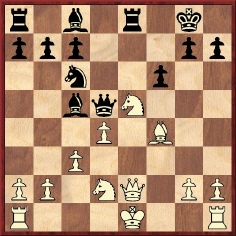
12...Bf5 13 O-O-O Qxa2 14 Ne4 fxe5 15 Bxe5 Nxe5 16 dxe5 Qa1+ 17 Kc2 Qa4+ 18 White resigns.
C.N.s 3389 and 3411 (see pages 305-306 of Chess Facts and Fables) discussed a letter to the editor on pages 124-126 of Lasker’s Chess Magazine, January 1905, which purported to contain reminiscences of Morphy under the pseudonym ‘Caissa’. At the conclusion of C.N. 3389 we observed that if all the personal statements in the article were correct, the writer (still alive in late 1904/early 1905) was born circa 1843, was already running a chess column in about 1858 and gave up chess some two years later.
We could, and can, think of no-one who fits the bill, but if the personal statements were not all correct Sam Loyd reverts to being a prime suspect. His track-record of dishonesty over his achievements is underscored by the fascinating book mentioned in C.N. 4406, The 15 Puzzle by Jerry Slocum and Dic Sonneveld (Beverly Hills, 2006). From page 75:
‘Sam Loyd has been correctly described as “America’s Greatest Puzzlist”, by Martin Gardner and many other writers. Although he deserves credit for his many wonderful puzzle inventions, he also had a reputation for using puzzles invented by Henry Dudeney, “England’s Greatest Puzzlist”, without crediting Dudeney, and taking credit for puzzles he did not invent. Loyd used his remarkable talent for making up stories about his puzzles to make his puzzles interesting as well as to spin tales about his accomplishments.’
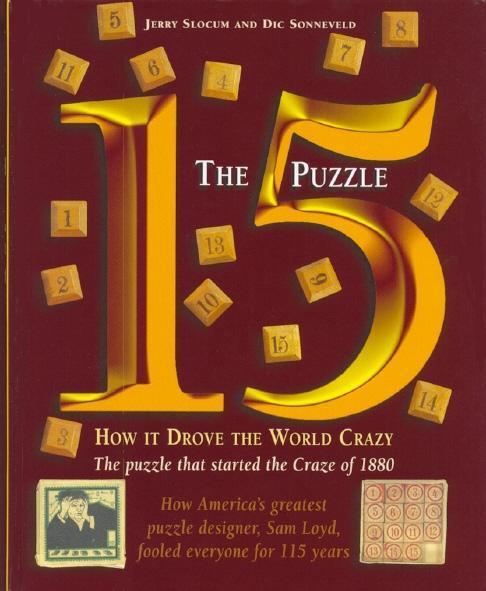
Another example is on page 79:
‘Sam Loyd’s first puzzle column for the Brooklyn Daily Eagle was published on 22 March 1896 with a biography of himself. He began by claiming that “At nine years of age, he was champion of the New York Chess Club”.’
Calle Erlandsson (Lund, Sweden) draws attention to a dominoes story related by César Revuelta Capablanca. The item also provides some information about the Capablanca family.
C.N.s 2428 and 3327 (see page 354 of A Chess Omnibus and pages 296-297 of Chess Facts and Fables) discussed a mysterious German player, G. Wiel, who was in England in the mid-1840s. Now Rod Edwards (Victoria, BC, Canada) draws attention to a report by Howard Staunton in his Illustrated London News column of 27 March 1847, page 203:
‘The President of the Brighton Chess Club has politely forwarded to us some entertaining games just played in a match between Captain Kennedy and Mr Weil, a German amateur of some celebrity, now resident in England. The terms of the contest are that the winner of the first 11 games shall be declared the victor, and that Captain K. shall bet the large odds of three to two upon the result of every game. The score up to this time stands as follows: Captain Kennedy 6, Mr Weil 2, Drawn 1.’
A win by Kennedy was then given, with his opponent referred to as ‘G.W.’. Moreover, page 219 of the 3 April 1847 issue had another game from the match and the following note by Staunton to a correspondent:
‘The little match between Captain Kennedy and Mr Weil has terminated in favour of Captain K., who won 11 games to his opponent’s five.’
Mr Edwards notes that the Illustrated London News systematically used the spelling ‘Weil’.
The Chess Player’s Chronicle, which fluctuated between ‘Wiel’ and ‘Weil’, gave four games from the match in its 1847 issues (on pages 107, 122, 131-132 and 320-321). All were wins by Kennedy, the last of them being the following:
G. Wiel (Weil?) – Hugh Alexander Kennedy1 e4 e5 2 Nf3 Nc6 3 Bc4 Bc5 4 c3 Nf6 5 d3 d6 6 h3 h6 7 O-O Be6 8 Bb3 Qd7 9 Be3 Bb6 10 Nbd2 g5 11 Nh2 Rg8 12 Bxb6 axb6 13 f3 h5 14 Bxe6 Qxe6 15 Qb3 d5 16 c4 Nd4 17 Qd1 c6 18 exd5 cxd5 19 cxd5 Nxd5 20 Nc4 b5
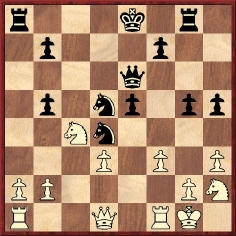
21 Nxe5 Ne3 22 Qd2 Nxf1 23 Kxf1 Nb3 24 Qb4 Nxa1 25 Qxb5+ Kf8 26 Nd7+ Ke7 27 Nc5 Qc6 28 Qb4 Nc2 29 Qc3 Ne3+ 30 Ke2 Nd5 31 Qe5+ Kd8 32 Ne4 Nf4+ 33 Kd1 Qc1+ 34 White resigns.
Javier Asturiano Molina (Murcia, Spain) asks about the correct game-score of S. Tarrasch v J. Berger, Breslau, 1889, there being two versions in the databases. The deviation occurs at move 48:
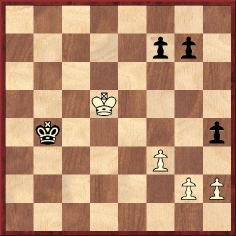
Version A appears in the Breslau, 1889 tournament book, pages 90-92, and in Dreihundert Schachpartien by S. Tarrasch (Gouda, 1925), pages 214-218, but we have yet to find a respectable source for Version B.
The game was given by Nimzowitsch in My System but (coincidentally?) only as far as move 47.
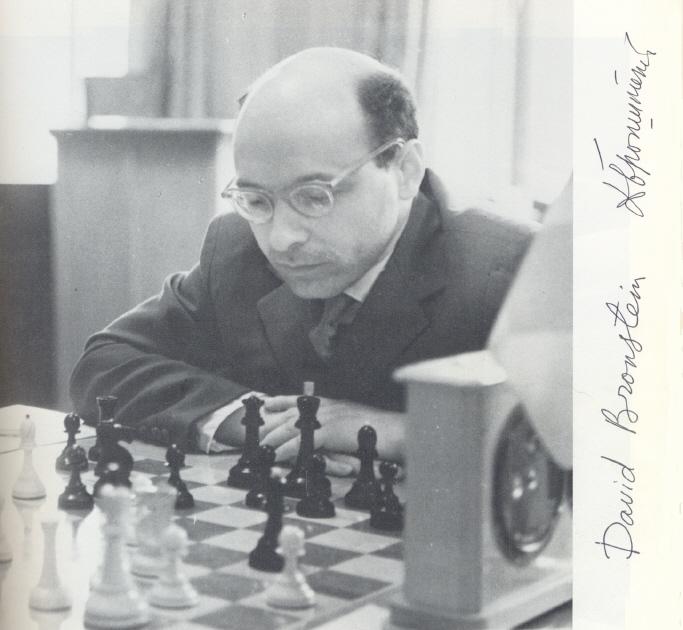
The above inscription comes from page 125 of one of our copies of A Picture History of Chess by Fred Wilson (New York, 1981).
The late David Bronstein seldom gave interviews, but a substantial one with Antonio Gude appeared on pages 38-42 of the March 1993 Revista Internacional de Ajedrez. Bronstein expressed irritation that he was remembered for his world championship match with Botvinnik and his book on the 1953 Candidates’ tournament. Asked whether he had been under pressure to lose the former event, he stated that, although there had not been direct pressure, circumstances related to his father, the fact that he was a Jew, and a clear institutional preference for Botvinnik had resulted in psychological pressure; Bronstein considered that winning the match could have been very damaging for him, although that did not mean that he had lost intentionally. For the record we quote the full exchange on this matter:
‘Gude: ¿Qué me dice del match con Botvinnik? ¿Le presionaron para que usted perdiera?
Bronstein: No hubo presión directa, naturalmente. Pero existían circunstancias, como mi padre, un manifiesto opositor al régimen, que había estado varios años en prisión, mi condición de judío, la marcada preferencia institucional por Botvinnik, a quien se le veía como un modelo soviético de campeón ... Había la presión psicológica del entorno, y a mí me parecía que ganar podría perjudicarme seriamente, lo cual no significa que yo perdiera de forma deliberada ...’
Bronstein spoke of the influence of his father, a rebellious defender of democracy. ‘From him I inherited that trait: when I am forbidden to do something, I rebel.’
Concerning the book on the Candidates’ tournament, Bronstein revealed that much of the text was by Boris Vainstein (see C.N. 1949 on page 206 of Kings, Commoners and Knaves).
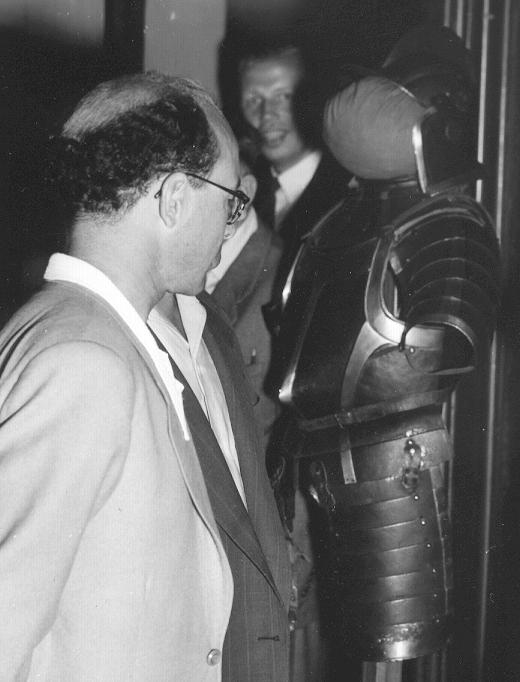
David Bronstein in Stein am Rhein, 1953
A quote by Bronstein used in the heading to the interview was ‘Chess is very easy’, his grounds for the statement being quirky:
‘If we remove from the board the queens and kings, and their corresponding pawns, we have four blocks of identical pieces (rook, knight, bishop and three pawns). Bearing in mind the simplicity of their moves, playing cannot be difficult. ... It is only necessary to follow the logical paths, forgetting about routine and stereotyped concepts. ... We are the ones who make chess complicated.’
Bronstein expressed regret that the Second World War had denied him a university education, adding that what little he knew he had had to learn on his own. He spoke warmly of Keres, a good friend and a quiet, courteous man who had, however, been accused of being a Nazi or a Nazi sympathizer. Bronstein acknowledged that Keres had played in tournaments in Germany and in occupied Europe, as well as fraternizing with German officials, but he called for understanding of the period and enquired rhetorically who was entitled to cast the first stone.
Asked why he went for long periods in the 1970s and 1980s without participating in chess events, Bronstein replied, ‘Because they did not invite me. And it is a very painful situation for a professional, believe me’. He added a detailed explanation of his absence from the 1978 USSR Zonal tournament in Lvov.
On a more personal level, Bronstein declared:
‘You have the impression that I am modest. I am not. I know that I am good, and even very good. Do you know why I like Leonardo da Vinci? Because he believed that for him nothing was impossible. I too believe that for me nothing is impossible in chess, so you can see that I am not as modest as you think.’
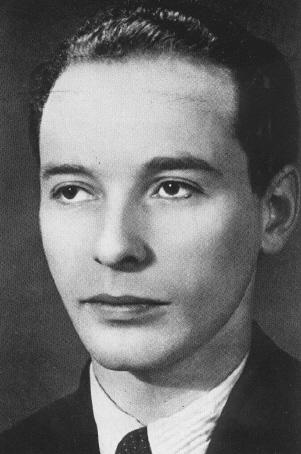
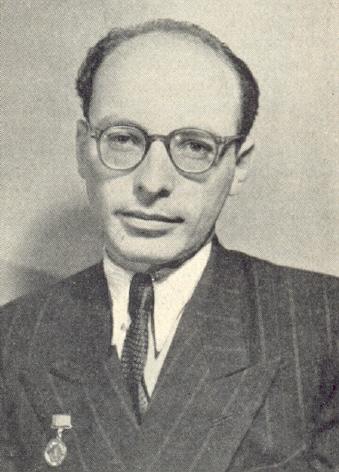
Among other questions put to Bronstein in the interview was ‘Who is your favourite player from the past?’ His reply:
‘Tartakower but, above all, Labourdonnais.’
Morgan Daniels (London) submits the passage below from pages 310-311 of an article by Jonathan Bendor and Thomas H. Hammond entitled ‘Rethinking Allison’s Models’ in the June 1992 issue of the American Political Science Review (pages 301-322). Mr Daniels recommends that the article should be read in conjunction with Graham Allison’s book Essence of Decision: Explaining the Cuban Missile Crisis (Boston, 1971).
‘Combinatorial Effects. Several times in Essence of Decision Allison uses the metaphor of chess when discussing how leaders are constrained in their choice of options. This is odd, because chess is the paradigmatic example of a choice situation that involves only a handful of basic rules yet exhibits truly Byzantine strategic complexity. There are only six distinct pieces in chess; each moves in only a few ways. (We may consider each piece, with its legal moves, as equivalent to a standard operating procedure.) Therefore, each player is “limited” to shuffling and reshuffling this combination of standard operating procedures over the 64 possible locations.
But the quantitative impression thereby conveyed, namely that the limited number of procedures creates a roughly equal (even in respect to order-of-magnitude) number of moves is grotesquely inaccurate. As is well known and as Allison himself noted, the number of possible sequences of play (i.e. behavior) in chess is staggeringly large (1971, 286, n. 93). A common estimate is 10¹²º, a number so large as to be equivalent, for all practical purposes, to infinity. Human beings can never exhaust the richness of chess. This is pure combinatorial explosion: the rules are deterministic. Nor does the complexity depend upon stochastic inputs. It is simply a matter of stringing together the handful of rules to generate new positions, whence one reapplies the basic rules, and so on. The example of chess suggests that our intuitions grossly underestimate combinatorial complexity.
Moreover, when we compare chess to the strategic maneuverings of two real military forces (to return to Essence of Decision’s empirical domain), the odds are good that chess is simpler. No matter how one counts distinct “pieces” in, say, a navy, there are surely more than seven. No matter how crudely one wants to count the basic standard operating procedures of, say, a destroyer, it has more than the handful available to even the most complex chess piece. And the “board” of any moderately large battle is more variegated than the (non-topographical) eight-by-eight chessboard. Therefore, chess, the paradigmatic choice environment of behavioral decision theory, provides a lower bound for the complexity of behavior one would expect to see in a clash between two governments. Thus, in this instance Essence of Decision seriously misapplied the lessons of the Carnegie School.’
Chris Ravilious (Eastbourne, England) provides some biographical information on the mysterious German player, noting that most of it has been gathered by Brian Denman.
‘An 1848 Brighton directory has a section on Brighton College, including a list of teachers. Gottlieb Weil is mentioned as a teacher of German, and is said to have previously discharged this role at Cambridge University. Weil’s name also appears in a list of “proprietors” (individuals who paid into a fund whose main object was the erection of buildings for the college). The entry for Brighton College in the 1850 version of the same directory once again includes Weil, although no longer as a proprietor.
Weil receives a passing mention in A History of Brighton College by G.P. Burstow and M.B. Whittaker (Brighton, 1957), his name appearing as “E. Gottlich Weil”. (“Gottlich” is a fairly obvious mistranscription of Gottlieb; the initial “E.” may or may not be correct.) All these sources spell his surname “Weil”.
Brian Denman also notes that a person named Gottlieb Weil died in the March quarter of 1895 in the Hambledon Registration District. He was 84 years of age.’
We note that the 1881 British census (see www.familysearch.org) has an entry for Gottlieb Weil, ‘Professor of German’, aged 66 and living at 76 High Street, Middlesex.
Joost van Winsen (Silvolde, the Netherlands) offers details regarding Blackburne, Gunsberg, Hoffer and Steinitz from the records in British censuses:
Joseph Henry Blackburne:
1871 census: entry not found.
1881 census: Joseph H. Blackburne. Age: 39. Born in Manchester. Address: 16 Lucey Road, Bermondsey, London. Occupation: Teacher of chess. Married to Mary J. Blackburne (age 40). Children: Julius Blackburne (son, age 4). Shared the address with the Goodway family.
1891 census: J.H. Blackburne not found, although his wife is listed: Mary J. Blackburne. Age 50. Born in Rugby. Address: 116 Barkworth Road, Camberwell, London. Occupation: “Depends on husband at sea.” Children: Charles T. Blackburne (son, age 24), Florence S. Blackburne (daughter, age 19), Frederick W. Blackburne (son, age 9), Julius Blackburne (son, age 14), Lauretta J. Blackburne (daughter, age 26), Leonard W. Blackburne (son, age 22).
1901 census: Joseph Henry Blackburn [sic], age 58. Born in Manchester. Address: 7 Whitbread Road, Lewisham, London. Occupation: Professor of chess. Married to Mary Jane Blackburn [sic] (age 59). Child: Frederick William Blackburn [sic] (son, age 19). Two visitors were members of the household: Florence Sarah Evans (age 29) and Quinnie Florence Evans (age 3).
Isidor Arthur Gunsberg:
1881 census: Isidor Gunsberg. Age: 26. Born in Budapest, Hungary. Address: 287 Mile End Road (Hamlet), London. Occupation: Tobacconist and professional chessplayer. Married to Jane Gunsberg (age 28).
1891 census: Isador [sic] Gunsberg. Age: 36. Born in Hungary. Address: 22 C ... [illegible] Road, Battersea, London. Occupation: Chessplayer and journalist. Married to Jane Gunsberg (age 38). Children: Alfred Gunsberg (son, age 6), Bertie Gunsberg (son, age 5), Lionel Gunsberg (son, age 3). One servant was a member of the household: Alice Jennings (age 21).
1901 census: Isidor Arthur Gunsberg. Age: 46. Born in Hungary. Address: 113 Clifford Road, Monken Hadley. Occupation: Author, journalist. Married to Agnes Jane Gunsberg (age 38). Children: Alfred Tudor Gunsberg (son, age 17), Kathleen Ramage Gunsberg (daughter, age 2 months), Miriam Gunsberg (daughter, age 4), Winifred Grace Gunsberg (daughter, age 6). One servant (Elizabeth Hatfield, age 56) and one relative (Winifred Ramage, age 27) were members of the household.
Leopold Hoffer:
1871 census: Leopold Hoffer. Age: 29. Born in Hungary. Address: 299 Whitfield Street, St Pancras, London. Occupation: Merchant. Unmarried.
1881 census: entry not found.
1891 census: Leopold Hoffer. Age: 48. Born in Pest, Hungary. Address: 404 Fulham Road, Fulham, London. Occupation: Journalist, author. Unmarried. Hoffer was a lodger and shared the address with five other persons, one of whom was Antony Guest (age 34), whose occupation was also given as journalist and author.
1901 census: Leopold Hoffer. Age: 58. Born in Hungary. Address: 9 Glynn Mansions, Fulham, London. Occupation: Journalist, author. Unmarried. One servant (Sarah Jane Niate, age 35) and Hoffer’s niece (Frén Reusz, age 21) were members of the household.
William/Wilhelm Steinitz:
1871 census: William Steinitz. Age: 33. Born in Prague, Bohemia, Austria. Address: 2 Princes Street, St Giles without Cripplegate, London. Occupation: Professor of chess. Married to Caroline Steinitz (age 25). Child: Flora Steinitz (daughter, age 4). The address was shared by several households.
1881 census: Wm. Steinitz. Age: 44. Born in Austria. Address: 11 Newton Street, Shoreditch, London. Occupation: Journalist. Married to Caroline Steinitz (age 35). Child: Flora Steinitz (daughter, age 14).
Dan Scoones (Coquitlam, BC, Canada) asks whether it is possible to identify when this photograph of Alekhine was taken:
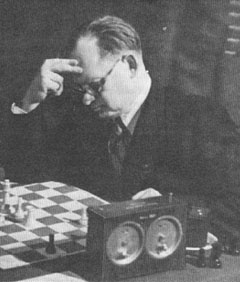
We note that it appeared on page 163 of Freude am Schach by Gerhard Henschel (Gütersloh, 1959) and that page 187 credited it to Ullstein Bilderdienst, Berlin.
This prompted us to look at the webpage of Ullstein Bild, where a search for ‘Alekhine’ and ‘Aljechin’ results in several unknown portraits of the master, although not the one above. Information will be welcomed on any other photographic agencies or companies with significant chess holdings.
C.N. 4229 referred to an Austrian webpage with a collection of chess postcards. Page two of the ‘Herren’ section features the photograph of Rudolph Valentino mentioned in C.N. 3097 (see page 108 of Chess Facts and Fables). Further details are sought, and particularly since in the biographies of the silent film star (1895-1926) we recall no mention of chess.
Addition on 17 March 2020: The links no longer work.
David Bronstein is barely recognizable in this photograph from page 32 of the November 1946 Chess Review:
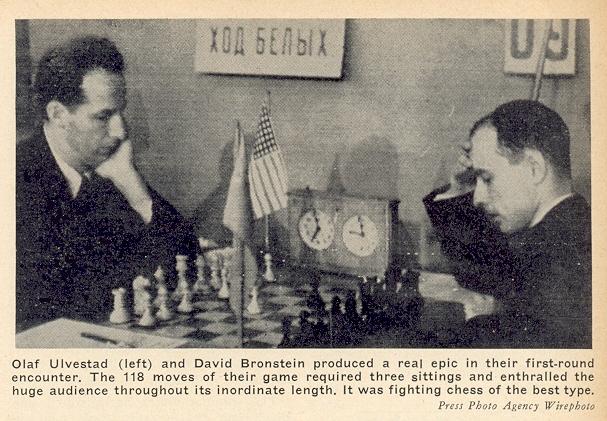
The game was played in the 1946 USA v USSR match:
Olaf Ulvestad – David Bronstein1 e4 c5 2 Nc3 Nc6 3 g3 g6 4 Bg2 e6 5 Nge2 Bg7 6 Nf4 Nge7 7 h4 h6 8 d3 d6 9 Bd2 Rb8 10 Qc1 b5 11 Nd1 a5 12 Ne3 a4 13 a3 Nd4 14 Qd1 Bb7 15 Rb1 d5 16 O-O O-O 17 Be1 dxe4 18 dxe4 Qc7 19 c3 Nb3 20 Qe2 Ba6 21 Kh1 Rb6 22 Rg1 b4 23 Qc2 bxa3 24 bxa3 Nc6 25 Rd1 Ne5 26 f3 Rfb8 27 Bf2 Qc6 28 Nh3 Na5 29 Rb1 Rb3 30 f4 Nec4 31 Nxc4 Bxc4 32 h5 e5 33 Rgd1 Qb5 34 Ra1
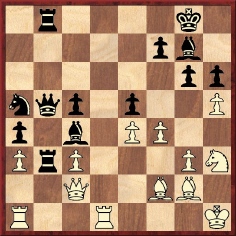
34...exf4 35 hxg6 Rxc3 36 gxf7+ Bxf7 37 Qd2 f3 38 Bf1 Qe8 39 Qd6 Nb3 40 Rab1 Rc8 41 Nf4 Rc6 42 Qd8 Rc8 43 Qh4 Qxe4 44 Rd8+ Rxd8 45 Qxd8+ Qe8 46 Qd6 Rc2 47 Nh3 c4 48 Re1 Qf8 49 Qb6 Nd2 50 Bc5
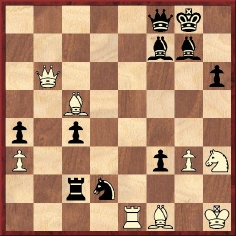
50...Nxf1 51 Rxf1 Qc8 52 Nf4 Rb2 53 Qa5 c3 54 Be3 c2 55 Bc1 Rb3 56 Kh2 Qc6 57 Qf5 Qb5 58 Qc8+ Bf8 59 Rxf3 Rxf3 60 Qg4+ Bg7 61 Qxf3 Qc4 62 Qg4 Qe4 63 Bb2 Bg6 64 Qc8+ Qe8 65 Qc4+ Qf7 66 Qc8+ Qe8 67 Qc4+ Qf7 68 Qc8+ Kh7 69 Bxg7 Kxg7 70 Qc6 Bf5 71 Qc3+ Kh7 72 Qc5 Qd7 73 Qe3 Qc7 74 Ne2 Qd7 75 Kg2 Bd3 76 Nc1 Bg6 77 Kh2 h5 78 Kg1 Qe8 79 Qc3 Qf7 80 Qe3 Kg8 81 Kg2 Qf5 82 Kg1 Qd5 83 Kh2 Bf7 84 Qc3 Qd1 85 Qe3 Bd5
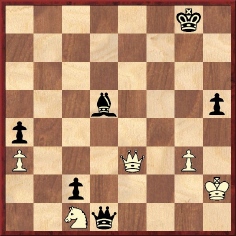
86 Qg5+ Kf8 87 Qh6+ Ke7 88 Qg7+ Kd6 89 Qf8+ Ke6 90 Qe8+ Kf6 91 Qd8+ Kg7 92 Qg5+ Kf7 93 Qf5+ Ke7 94 Qg5+ Kd7 95 Qg7+ Kc6 96 Qc3+ Kd6 97 Qf6+ Be6 98 Qf4+ Ke7 99 Qe3 Qd5 100 Qa7+ Bd7 101 Qe3+ Kd8 102 Qb6+ Kc8 103 Qa6+ Qb7 104 Qc4+ Qc6 105 Qd3 Qc5 106 Qe2 Kb7 107 Qd2 Bc6 108 Qe2 Qxa3 109 Qxc2 Qf3 110 Qb2+ Ka6 111 Qe2+ Qxe2+ 112 Nxe2 a3 113 Nc1 Kb5 114 Kg1 Kc4 115 Kf2 Kc3 116 Ke3 Bd5 117 Ne2+ Kb2 118 Kd4 a2 119 White resigns.
Has any master ever ventured to annotate this game in depth? Chess Review had just a brief overview:
‘Ulvestad played the opening poorly, allowing Bronstein to obtain a strong queen-side initiative. Despite ingenious and resourceful defense on Ulvestad’s part, his game went steadily downhill, and before the first adjournment he had lost a pawn. During the next sitting he lost another pawn, but despite gruesome time-pressure he managed to win back one of the pawns by a swindle. His ultimate downfall resulted from a weak 99th move.’
Tim Harding (Dublin) quotes the following from page 61 of the 1853 Chess Player’s Chronicle, in an article entitled ‘Sketches of our Provincial Chess Clubs, and their Chief Notabilities’:
‘... Mr Weil, the German player, who oscillates between Brighton and Cambridge. Mr Weil is undoubtedly a smart and brilliant player, but he is the unsoundest amateur in Europe.’
Thomas Binder (Berlin) enquires about the gamelet 1 d3 f5 2 e4 fxe4 3 dxe4 d6 4 Bc4 Nf6 5 e5 d5 6 exf6 dxc4 7 f7+ Resigns which was published on pages 229-230 of Verflixte Fehler by Anatoli Mazukewitsch (Berlin, 1986 and 1989). Although it is stated to have been played between ‘Henningsen’ and ‘Borik’ in Dortmund in 1979, our correspondent has been informed by Otto Borik, who is the editor of Schach Magazin 64, that he lost no such game and has never played anybody named ‘Henningsen’.
The book was translated from the Russian, and we note that the author also included the game on page 351 of a recent book, Korotkie shakhmaty (Moscow, 2004):
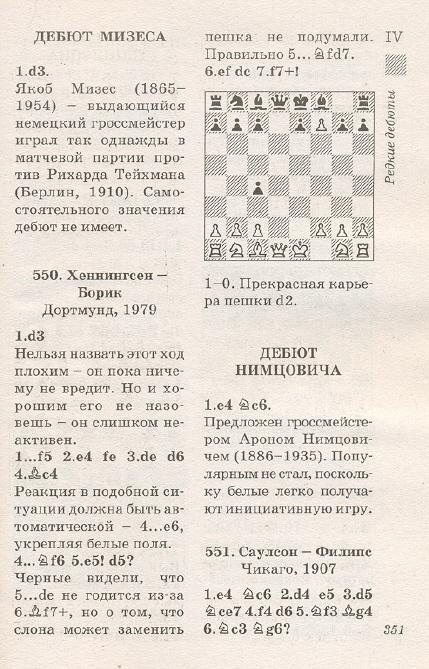
Can a reader take the matter further?
We also throw open a query from Pierre Bourget (Beauport, Canada) regarding the game D. Bronstein v B. Goldenov, Kiev, 1944 which is given in various databases as follows: 1 e4 e6 2 d4 d5 3 Nc3 Nf6 4 Bg5 Bb4 5 e5 h6 6 Bd2 Bxc3 7 bxc3 Ne4 8 Qg4 g6 9 Bc1 c5 10 Bd3 cxd4 11 Ne2 Nc5 12 cxd4 Nxd3+ 13 cxd3 b6 14 h4 h5 15 Qf3 Nc6 16 Bg5 Ne7 17 O-O Ba6 18 Rac1 Qd7 19 Qf6 Rg8 20 Rc3 Nf5 21 Ng3 Nxd4 22 Rfc1 Nb5 23 R3c2 Qd8 24 Qf4 Qd7 25 a4 Resigns.
However, our correspondent points out that this game has appeared elsewhere, and most notably in the later editions of The Golden Treasury of Chess by F. Wellmuth/I.A. Horowitz, as ending on move 24 with, in the words of that book, ‘one of the most amazing winning moves on record’:
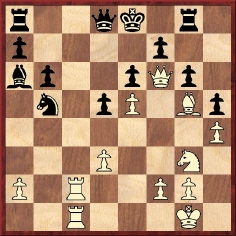
24 Rc8.
The Treasury gave the move three exclamation marks, but what is the truth about the conclusion to the game?

Wolfgang Franz (Oberdiebach, Germany) points out that the position on the board occurred in Alekhine’s game against Mario Napolitano, Munich, 16 September 1942, before 49 Ra5:
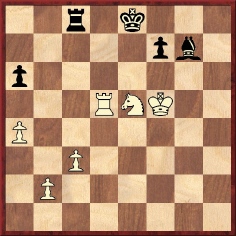
We can add that another photograph of that game was published on page 279 of Alt om Skak by B. Nielsen (Odense, 1943):
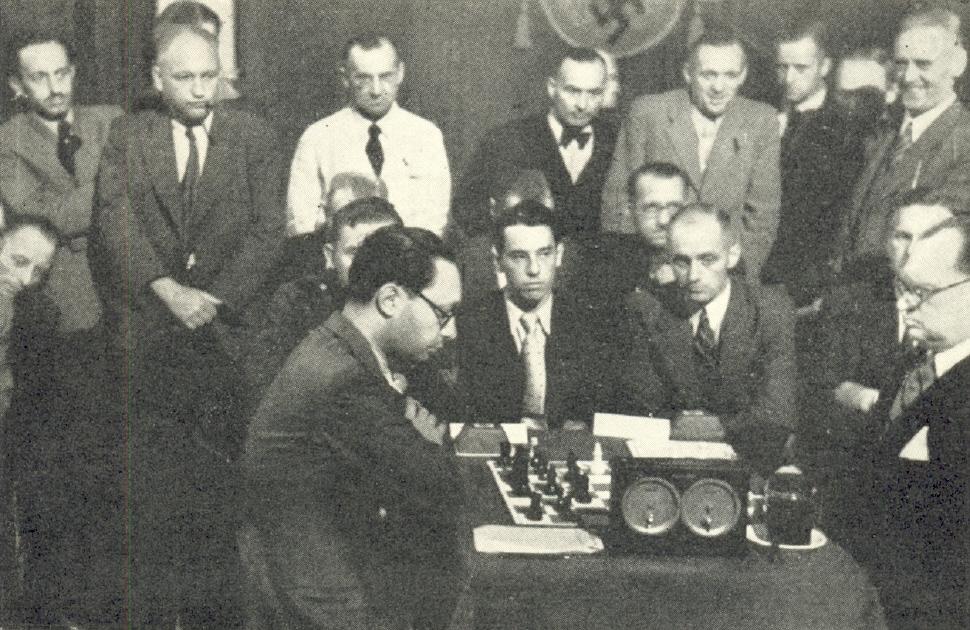
C.N. 4726 asked who was the last surviving master who had come into personal contact (not necessarily over the board) with J.H. Zukertort (1842-88). The person we had up our sleeve was Sir George Thomas (1881-1972), but we note now that the wording of Assiac’s account on pages 47-48 of The Delights of Chess (London, 1960) indicates that ‘personal contact’ did not occur:
‘Having met so many of his contemporary masters – contemporary through several generations and ranging from Steinitz and Chigorin through Lasker, Pillsbury, Tarrasch to Keres and Reshevsky, Penrose and Petrosian – Sir George has some fascinating stories to tell about many of them. Indeed, Zukertort would seem to be about the only one of the “old-timers” he never met to speak to, though he saw even him at a (respectful) distance while admitted to his mother’s drawing-room as a child of six or seven.’
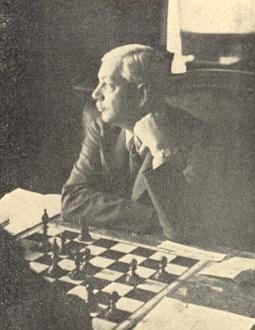
Sir George Thomas
To our catalogue of Chess Prodigies Rod Edwards (Victoria, BC, Canada) adds an unnamed one:
‘In his column in the Illustrated London News of 22 November 1856, page 532, Staunton gave the following response to a correspondent, “Septimus”:
“A more remarkable instance of precocious chess genius was the nephew of Mr Pratt (the editor of a well-known edition of “Philidor”). This young Titan, only 15 years of age, at the contest for a prize given by Mr Holford many years ago, entered the arena against the redoubtable Cochrane, then a first-rate player, and was within an ace of carrying off the trophy. We have heard Mr Cochrane admit that it was by the merest accident he saved the match.”
The term “precocious chess play” had been used by Staunton three weeks earlier in an apparent reference to Morphy in the column on page 460 of the 1 November 1856 issue, responding to C.A. Maurian:
“Your communication, dated June, appears to have made a wide circuit. We are glad that at length it has reached its destination, and thank you for the extremely interesting specimen of precocious chess play it contains. If the young Philidor of New Orleans proceeds as he has begun, he will soon rival the oldest and best players of the age.”’
From Peter Anderberg (Harmstorf, Germany):
‘The game Henningsen v Borik (Dortmund, 1979, Open Tournament B) was published in Schach-Echo 1979, page 167, with annotations by the winner, Jürgen Henningsen (1933-1983). His opponent was not Otto Borik (who was taking part in the grandmaster group of that festival), but his wife, Ruzena Borik.’
An addition (1844 vintage) to our feature article about Copyright on Chess Games comes from Robert John McCrary (Columbia, SC, USA):
‘On page 92 of volume V of the Chess Player’s Chronicle Staunton included the following in his “Proposals For Another Great Chess Match” with Saint Amant:
“I think, also, it would be advisable for the interest of the players that some arrangement should be entered into for the purpose of prohibiting the publication of the games, until the termination of the contest.”
On page 128 Staunton commented that he was ...
“... only anxious to prohibit the printing of the games before the match concludes, that the advantages accruing from their publication may be reaped by the parties best entitled to them.”
He then accused Saint Amant of having had a private arrangement for publication of games from their first match, to Staunton’s disadvantage.’
Christophe Bouton (Paris) reverts to the question of the second volume of Tartakower’s Best Games, of which an English translation by Harry Golombek was published by G. Bell in 1956. Given that no French edition has ever appeared, our correspondent asks if any information is available as to the whereabouts of Tartakower’s manuscript (e.g. in the archives of Golombek or of Bell).
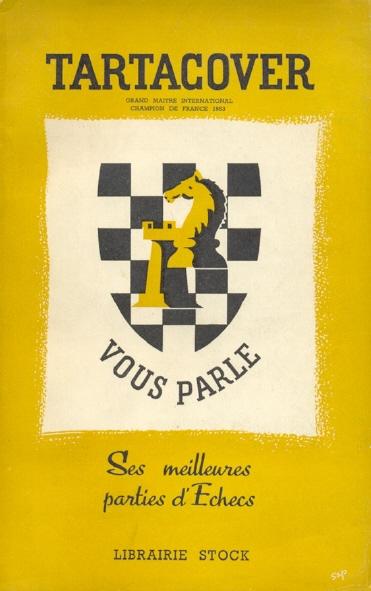
The front cover of the original (1953) edition of Tartakower’s book on the period 1905-1930.
‘Robert James Fischer est né en 1943 à New-York. Il a acquis ses premiers rudiments d’échecs à six ans, grâce à son grand frère.’
That appears on page 10 of Mes parties favorites de Fischer, Spassky, Kortchnoï, Larsen [4x25] by Paul Keres and Iivo Nei, a recent publication by Editions Chessy in Spain. The error regarding Fischer’s birth-place was on page 9 of the original Estonian edition (Tallinn, 1975), which, however, correctly stated ‘sister’ rather than ‘brother’.
Fischer himself gave the basic facts on page xi of Bobby Fischer’s Games of Chess (London, 1959):
‘I was born in Chicago, Illinois, on March 9, 1943, and learned the chess moves early in 1949 from my sister Joan, who was eleven.’
C.N. 3336 (see page 256 of Chess Facts and Fables) quoted an instance of Reuben Fine writing that Fischer was ‘born in Brooklyn’.
Tailpiece: what is the earliest known photograph of Fischer?
A number of entries have been added to our Where Did They Live? feature article thanks to Joost van Winsen (Silvolde, the Netherlands), on the basis of his research in the British censuses from 1861 to 1901.

The earliest, longest, oldest, smallest, youngest ... Our latest feature article concerns Chess Records, and readers are invited to participate actively in expanding it.
The February 1928 Wiener Schachzeitung featured four spoof games parodying the annotational styles of Becker, Bogoljubow, Tartakower and Nimzowitsch. For example, pages 52-53 had a 13-move draw (Falkbeer Counter-Gambit) between Grünfeld and Capablanca headed ‘Anmerkungen von E. Bogoljubow’ (‘Annotations by E. Bogoljubow’); it was a bare game-score.
Pages 57-59 carried one of the most famous chess parodies, ‘Eine geniale Illustration zu meinem System’ by ‘Aaron Nimzowitsch’, with the game Nimzowitsch v Sistemsson, Copenhagen, 1927 (beginning 1 e4 e6 ‘2 h4!!’).
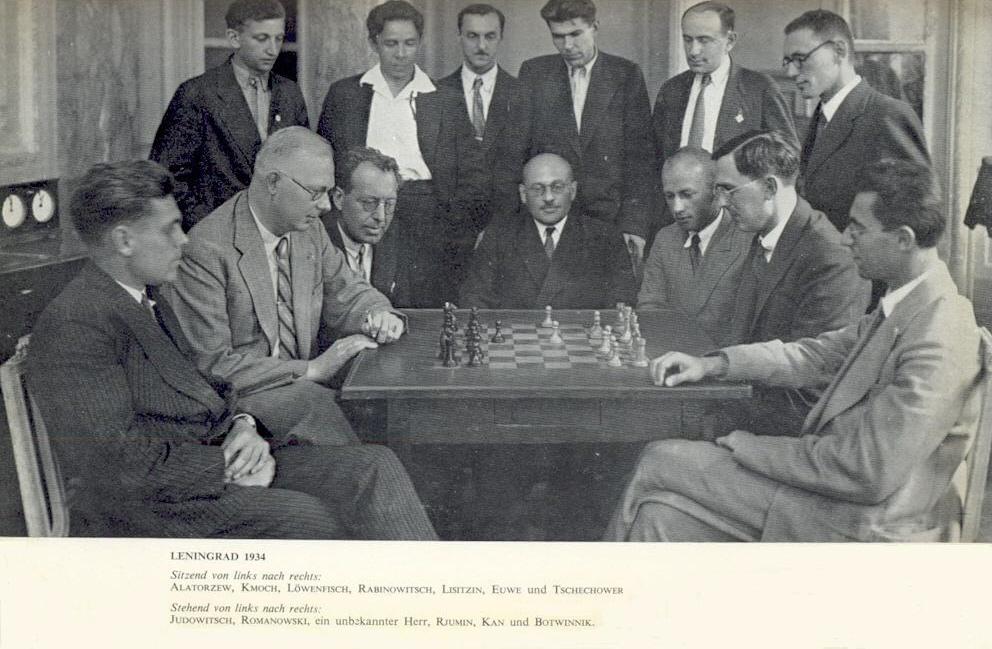
The above photograph was published opposite page 208 of Hundert Jahre Schachturniere by P. Feenstra Kuiper (Amsterdam, 1964), and it was ‘Black’, Hans Kmoch, who had composed the parody. An English edition appeared on pages 104-105 of the April 1951 Chess Review under the title ‘An Ingenious Example of My System’ (where Black was named as Systemsson), and a slightly different text (entitled ‘A Masterly Example of My System’) was given on pages 169-176 of The Treasury of Chess Lore by Fred Reinfeld (New York, 1951). Two other anthologies which included it are The Best In Chess by I.A. Horowitz and J.S. Battell (New York, 1965), pages 213-220, and The Best of Chess Life and Review, Volume 1, 1933-1960 by B. Pandolfini (New York, 1988), pages 432-439.
A strange commentary on the parody was written by R.E. Fauber on page 209 of Impact of Genius (Seattle, 1992):
‘My System is a peach of a book, ripe both for adulation and parody. When Hans Kmoch’s parody of Nimzovich was reprinted in Chess Review in 1951, readers took the nonsense as serious instruction. Reading that “the move is strong because it is weak!” after the moves 1 e4 e6 2 h4!! caused not a ripple. Some agreed with another note in which “Herr Sistemsson” wrote, “The fact is that I’m a marvelous player, even if the whole chess world bursts with envy”.
One reader wrote, “Sold one copy [of My System], Nimzovich’s system seems to me really good.” Another reader diffidently wrote, “I hope I don’t offend anyone. But I think Aaron [sic] Nimzovich went wrong by 23 Q-R7 ...” and demonstrated that “Sistemsson’s fictitious opponent overlooked a mate in six”.
Even in jest it was Nimzovich’s fate to be misunderstood. The public applauded his teachings only after they had been carefully distorted ...’
The two additions above in parenthesis were by Fauber, who mysteriously ascribed the remark about envy to ‘Sistemsson’ rather than Nimzowitsch/Kmoch. As regards the reaction of Chess Review readers, below are the letters to which Fauber was referring, from page 193 of the July 1951 issue:
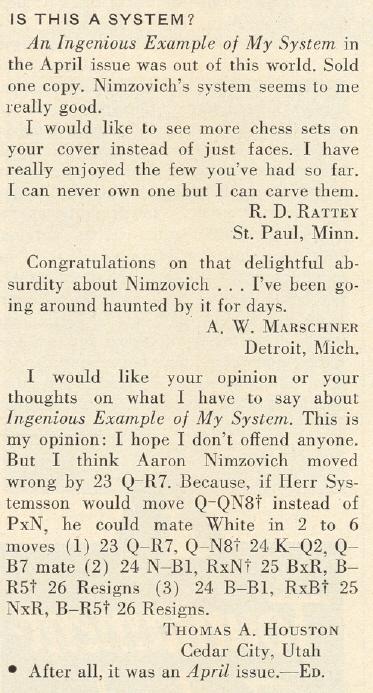
It should, in any case, be noted that when publishing the game Chess Review (April 1951, page 105) had made it clear, in this editorial end-note, that the game was a parody:
‘To the incredulous, the above article was published in the February 1928 issue of the Wiener Schachzeitung under the editorship of Hans Kmoch.
Kmoch admired and esteemed Nimzovich as a great player and a profound and original thinking. Yet he could not help poking sly fun at Nimzovich’s often pompous and bombastic manner. Luckily this rollicking parody is so good-natured, with a few grains of sense artfully concealed in a farrago of nonsense, that Nimzovich expressed himself as vastly amused by it.’
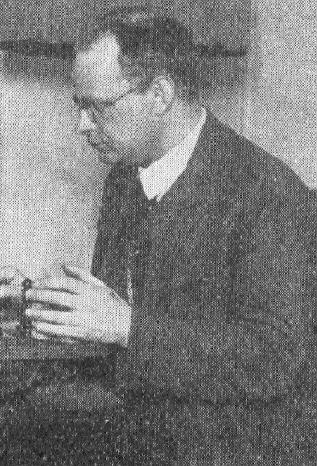
Aron Nimzowitsch
It is de rigueur for the subject of a spoof to profess
himself ‘vastly amused by it’ and to appear, at least, a good
sport who will take it all in good part. Steinitz, though, took
public offence when parodied by Tarrasch, and the consequences
were unexpected.
On pages 276-278 of the September 1890 International Chess Magazine he wrote at length about Tarrasch and followed up with some notably critical remarks about him on page 308 of the October 1890 issue. Subsequently, on pages 60-63 of the February 1891 Deutsche Schachzeitung, ‘Dr T.’ annotated a game Vier – v. Dreizehn, Magdeburg, 20 July 1920, which went 1 Nf3 Nf6 2 Nc3 Nc6 3 Ng1 Ng8 4 Nb1 Nb8 5 Nh3 Na6 6 Na3 Nh6 7 Ng1 Ng8 8 Nb1 Drawn. Steinitz reacted as follows on page 45 of the February 1891 issue of the International Chess Magazine:
‘A certain Dr ---sch was some time ago mildly taken to task in this column, page 308, October 1890, International Chess Magazine, for what would have deserved to be called an exhibition of ill-breeding. In the last number of the Deutsche Schachzeitung somebody, disguised under the predicate and initial of Dr T., takes a terrible literary revenge on page 307 of this magazine for the sin committed on page 308. The targets for the chess critical retribution are my remarks on my 13th move in the Two Knights’ Defence, Kt-Kt sq, and especially my comments on the circumstance that six of the pawns on my side were unmoved. On this theme Dr T. constructs a game which it is supposed will be played in 1920 at some chess congress in Germany, and in which both parties move their knights backwards and forwards to B3, Kt sq, and R3, etc. Before framing the notes to this “game of the future”, the wonderdoctor of Nuremberg has probably performed a surgical operation on his own cranium during the leisure hours which his “ärtzliche Praxis” allows him, in order that he might be able to see the joke or wit of his remarks. On my mind it leaves no other impression than that a man who, instead of turning over a new leaf, say to page 308, and making some kind of apology for his ill-mannered behaviour, aggravates his first offence by such a performance of a “dummer Junge” in his “Flegeljahre”, cannot be a genius like Morphy or Anderssen, who, like all true men of supreme eminence, always behaved like gentlemen.’
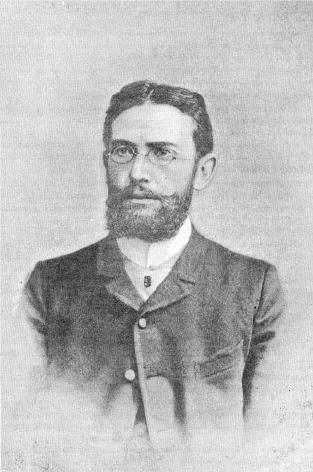
Siegbert Tarrasch
But then came a memorable article by Tarrasch entitled ‘Bemerkungen zu dem Wettkampf Gunsberg-Steinitz’ on pages 88-91 of the March 1891 Deutsche Schachzeitung which eulogized Steinitz as a genius. Below is part of Steinitz’s response, from pages 80-82 of the March 1891 International Chess Magazine:
‘To return to Dr Tarrasch, his answer to the mild rebuke which I administered more to his “Post Official” president than to himself came in the shape of the grossest satire that has ever been written on my theories and my practical play. It turns out to be a mere joke, not a good one – I must say nor in good season. The target for his caustic missiles was apparently my play in the cable match, and considering the responsibility which rested on my shoulders and that I had staked on that contest at least a great part of my reputation in the eyes of the general public, I could hardly be expected to take in very good part such an interference from one who had already seriously trodden on my toes. So much as an explanation of my own action in the quarrel, which was not of a very serious character, though it seemed to degenerate into one of those sanguine literary warfares which have caused me much unhappiness in the course of my life. As usual, however, I was not the aggressor, and the matter was not a mere personal squabble, but was one which in the exercise of my editorial duty could be fairly criticized before the public.
Dr Tarrasch has now made more than honorable amends for his “Zukunftsschach”, or chess of the future, with a research into chess of the past which for boldness of thought and expression, inspired by thorough honesty and magnanimous feeling, has not had its equal in chess criticism of first-class experts within my recollection. It is the handsomest recognition that has ever been accorded to my work and aims as a player and analyst, and its promulgation by a master of a new generation at a time when probably, and to all appearance, my old powers are on the wane, leads me to hope that at least the flagrant injustice to which I have been constantly subjected during the greater part of my career may go out of fashion during my lifetime. Dr Tarrasch’s remarks are really too flattering to me to be quoted in this journal, and I shall only cite one item which has never been mentioned in public. Speaking of myself he says: “He has learned of the game only as much as a second-class player – the rest he has done from his own means. The whole of the modern conduct of the game, or at least by far the greatest part of it, is his work.” The first sentence of the above, which can be easily verified from my games, shows at any rate that Dr Tarrasch has made himself well acquainted with the progress of my play. Unlike some shallow critics who have given me credit for book knowledge or practically credited others with my own new ideas, the Doctor lays most stress on the originality of my play, and I may only take this opportunity to affirm that only just now, while writing my own book, I am going through the openings systematically for the first time in my life. But when Dr Tarrasch denies the genius of Morphy on the ground that the great master did not create anything new in the opening or in the general conduct of the game I must, in common justice, strongly express my dissent from such a conclusion. In my opinion any player of first rank must possess a certain amount of genius at least, including that of some originality, for no learning will be sufficient for mastering the complications of the middle-game. Any extraordinary performance, whether it be the result of the excess of one excellent quality or a rare combination of fine qualities, may be taken as an absolute sign of genius, and in the case of Morphy his youth cannot be ignored in estimating his standard of eminence.’
These substantial texts by Tarrasch and Steinitz about the latter’s place in chess history have received insufficient attention, whereas the eight-move-game parody is well known. Among the places it has appeared in English are pages 121-123 of the March 1891 BCM, pages 151-152 of Checkmate, April 1903 and pages 154-156 of The Treasury of Chess Lore by Fred Reinfeld (New York, 1951).
Finally, the note at Black’s seventh move takes us back to C.N. 2323 (see page 344 of A Chess Omnibus), which discussed the phrase ‘the father of modern chess’. Those words appeared, with reference to Steinitz, in the BCM version of the parody, which was credited to the New York Herald. However, the relevant phrase in the Deutsche Schachzeitung original was ‘der Vorläufer unserer modernen Schachstrategie’.
Javier Asturiano Molina (Murcia, Spain) draws attention to these reminscences on page 157 of Ajedrez inmortal de Capablanca by M. Euwe and L. Prins (Buenos Aires, 1959):
‘Cuando hablé con Capablanca por última vez – fue en la escalinata del teatro Politeama de Buenos Aires, donde se disputaba el Torneo de las Naciones en 1939 – Capablanca abogaba apasionadamente por un match por el campeonato mundial. “No importa con quién, cómo ni dónde”, me dijo, “con tal que no se permita a Alekhine seguir encerrado más tiempo en su torre de marfil. Tiene que jugar o ser descalificado. Esta situación es una locura. Tiene que jugar, lo ha de hacer ...”’
A number of comments are called for. Firstly, the text appeared at the end of the chapter on the 1927 world championship match, a chapter whose authorship was credited (on page 139) to Euwe. However, Euwe did not participate in or attend the 1939 Olympiad. Secondly, the title page stated that the Spanish text was a translation, by L.A. Asterblum, from the German. Page 166 of that (1952) book by Euwe and Prins, Capablanca Das Schachphänomen, specified, as the Spanish book did not, that the text about the conversation in 1939 was written by Prins. Thirdly, the German is not identical to the Spanish, and below we give a translation direct from the German:
‘When I spoke with Capablanca for the last time – it was on the steps of the Politeama Theatre in Buenos Aires, where the Tournament of Nations took place in 1939 – he passionately argued for a world title match. “It does not matter what, how or where”, is roughly what he said, “as long as Alekhine is no longer allowed to retreat into his ivory tower. He must play or be disqualified. This situation is madness. He must, he must ...”’
We note that the text is absent from the original Dutch edition, Het schaakphenomeen José Raoul Capablanca y Graupera (The Hague, 1949), where it would have been expected on page 173.
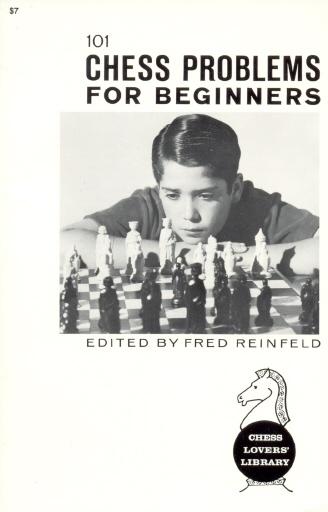
A curiosity among books ‘by’ Fred Reinfeld is 101 Chess Problems for Beginners. It is readily available in various paperback editions published by the Wilshire Book Company, and the front cover and spine ascribe editorship to Reinfeld, with no mention of anyone else. Inside, however, an explanatory note is entitled ‘101 Chess Problems for Beginners by Comins Mansfield and Brian Harley Edited by Fred Reinfeld’. The final paragraph of that note reads:
‘All these problems are the work of Comins Mansfield, one of the most distinguished men in this field. The introduction and the detailed explanations of the solutions are by Brian Harley, one of the outstanding authorities on problems. Fred Reinfeld has contributed a foreword, helpful hints to solvers, and careful editing to enhance the reading pleasure of those who are trying their hand at problem-solving for the first time.’
Tracing the genesis of the book is not easy, but it is a rewritten version of Mansfield and Harley’s The Modern Two-Move Chess Problem (London, 1958).
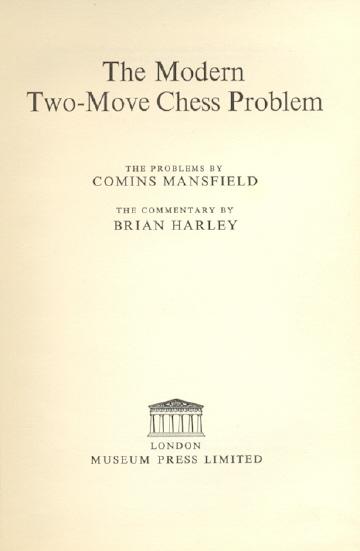
Reinfeld’s book is dated 1960, at which time Mansfield, though not Harley, was still alive. We are not insinuating that Reinfeld did anything improper (the 1958 book is, after all, mentioned on the imprint page), but we should like to know more about any arrangement entered into with Mansfield which led to the curiosity of only Reinfeld’s name appearing on the cover.
Richard Holmes (London) writes:
‘I have been looking up Howard Staunton (1810-74) in the various genealogical resources now available on-line.
In the 1871 census Howard and Frances Staunton were recorded at Gad’s Hill, Northfleet in Kent, but I cannot find that place on a modern map; the Gadshill where Charles Dickens once lived is not far away, but surely could not be described as Northfleet. Howard Staunton’s occupation was given as “professional writer” and his birthplace as Keswick, Cumberland (rather than Westmorland, as seen in other sources). The reference is RG10/897/69/21.
In the 1861 census the couple were visiting the sisters Emma and Martha Englehart in Isleworth. Howard Staunton was recorded as “Author (scientific & general literature)”, and his birthplace was given as “in the Lakes” (RG9/771/50/12).
In the 1851 census Staunton and his wife were at 8 Sydney Place, Kensington with two of her relatives and two servants. He was described as “Journalist and Annuitant”, his birthplace being recorded as Westmorland (HO107/1469/322/33).
I cannot find Howard Staunton in the 1841 census.
As is well known (and is confirmed by www.familysearch.org), he married Frances Carpenter Nethersole on 23 February 1849 at St Nicholas, Brighton. However, a further fact derived from that website which I have not seen noted is that Frances Carpenter and William Dickenson Nethersole had no fewer than eight children baptized at St Clement Danes between 1826 and 1842.
The baptismal entries for 1810 at Crosthwaite, the parish that included Keswick, were also consulted via the above-mentioned website; they show around 40 male baptisms, but none named either Howard or Staunton. None of this throws any real light on Howard Staunton before the first documented appearance generally quoted (1836) but may offer clues for further research.
The obituary in The Times, 30 June 1874, page 8, quoted a press release from the Athenaeum which appears to be the source for several of the “facts” about his life, e.g. that he attended Oxford without taking a degree and that he once played Lorenzo to Kean’s Shylock.’
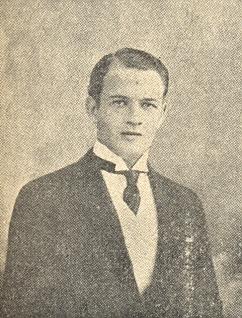
Alejandro Guerra Boneo
In a double-round tournament at Buenos Aires in 1924 Richard Réti lost only one game out of 18, to Alejandro Guerra Boneo:
Richard Réti – Alejandro Guerra Boneo1 Nf3 Nf6 2 c4 c5 3 g3 g6 4 Bg2 Bg7 5 Nc3 Nc6 6 O-O O-O 7 d3 d6 8 Bd2 h6 9 Rb1 Qd7 10 a3 b6 11 b4 Bb7 12 b5 Ne5 13 Nxe5 dxe5 14 Qc2 Bxg2 15 Kxg2 Qb7+ 16 f3 Ne8 17 a4 Nd6 18 a5 Nf5 19 Qc1 Kh7 20 Be3 Nxe3+ 21 Qxe3 f5 22 Qd2 e6 23 e4 Rfd8 24 Rb3 Rd6
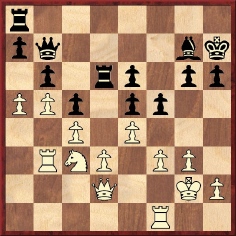
25 Ra1 Rad8 26 Nb1 fxe4 27 fxe4 Rxd3 28 Rxd3 Qxe4+ 29 Rf3 Rxd2+ 30 Nxd2 Qc2 31 axb6 axb6 32 Rf2 e4 33 Nf1 Qxc4 34 Ra7 Kg8 35 Ra8+ Kh7 36 Ra7 Kg8 37 Ra8+ Kh7 38 Ra7 Qxb5 39 Rff7 Qb2+ 40 Kg1 Qd4+ 41 Kg2 g5 42 g4 Kg6 43 Rxg7+ Qxg7 44 Rxg7+ Kxg7 45 Kf2
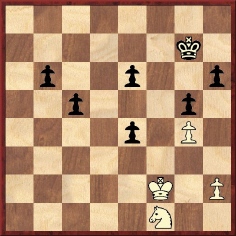
45...Kf6 46 Ke3 Ke5 47 Nd2 b5 48 Nxe4 Kd5 49 Nf6+ Kc4 50 Ng8 b4 51 Nxh6 b3 52 Kd2 Kb4 53 Nf5 exf5 54 gxf5 b2 55 Kc2 Ka3 56 White resigns.
The game was given with Guerra Boneo’s notes on pages 83-85 of the December 1927 issue of El Ajedrez Americano, marking the first anniversary of his premature death:
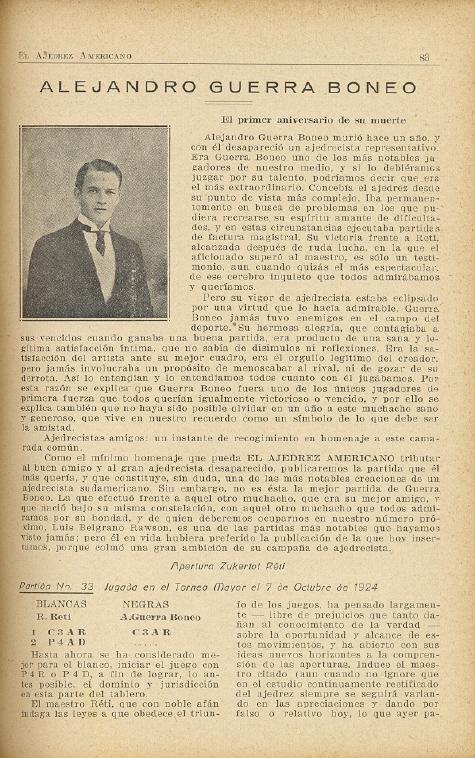
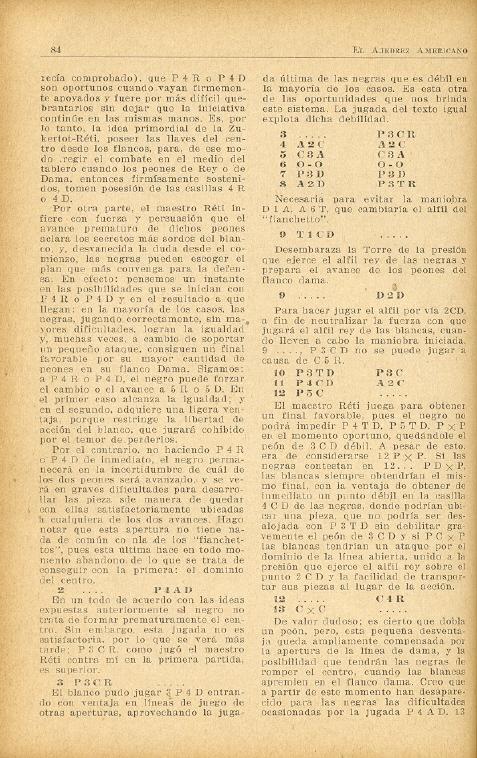
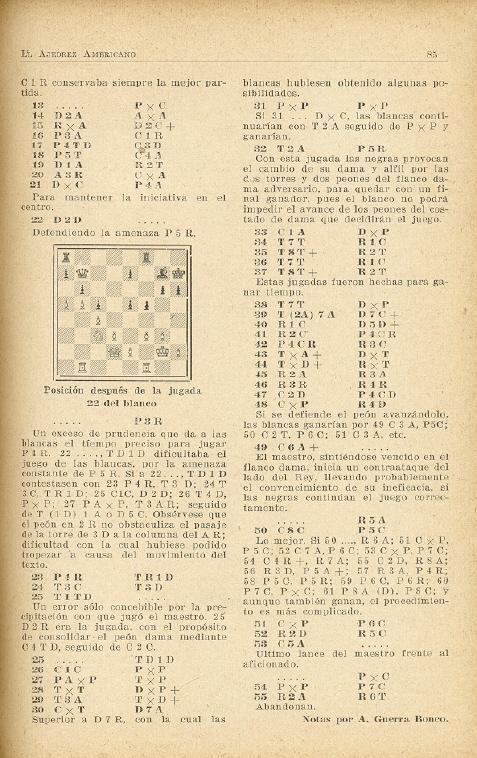
From Christian Sánchez (Rosario, Argentina):
‘Alejandro Martín [1] Guerra Boneo worked for the Department of Meteorology of the Ministry of Agriculture (Dirección de Meteorología del Ministerio de Agricultura) [2]. It was apparently this Department which sent him on a mission to the most southerly and northerly points of Argentina, the Orcadas del Sur islands and La Quiaca [3]. At the latter town, in the province of Jujuy, he died in an unspecified accident [4] on 29 December 1926 [5]; he was in his twenties (his parents, Nicolás Guerra Stewart and María Teresa Boneo [5] had married on 30 November 1896) [6].
Sources:
[1] Personal message from the Recoleta Cemetery: “El señor Boneo ingresó al cementerio de Recoleta, tal cual lo dice la necrológica, el 2 de enero de 1927, pero fue posteriormente trasladado, el 5 de marzo de 1954 al Cementerio de Chacarita, e incluso, en el registro figura como Alejandro Martín Guerra.”
[2] La Nación, 30 January 1927, page 2.
[3] La Nación, 30 December 1926, page 16.
[4] El Ajedrez Americano, November 1928, page 451.
[5] La Nación, 1 January 1927, page 28 (obituary).
[6] Descendants of Perrin Bonneau webpage, which gives the following information: “127. María Teresa Boneo-[76] (Martín María, José María, Martín, Martín de, Antonio Feliciano, Martín, Martín, Francisco, Martín, François, Simon, Perrin) was born on 4 October 1870 in Buenos Aires. María married Nicolás Guerra Stewart-[80] [MRIN: 56], son of Alejandro Guerra Botet-[1824] and Margarita Stewart Agell-[1825], on 30 November 1896 in Buenos Aires. Nicolás was born in 1867 in Buenos Aires, Argentina and died on 10 March 1950 in Buenos Aires, Argentina at age 83 and was buried in Recoleta.”’
C.N. 2578 (see page 191 of A Chess Omnibus) gave a list of non-chess books by Fred Reinfeld and mentioned one of his alleged pseudonyms, ‘Robert V. Masters’. Is any firm information available on that name?
Moreover, what is known about Roy Masters, the author of The
Key to Chess Simplified, a 96-page book from Key Publishing
Company, New York which first appeared in 1959?
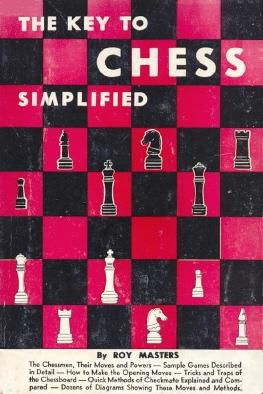
Readers should have no difficulty in identifying the writer of those comments. They are gleaned from our latest feature article.
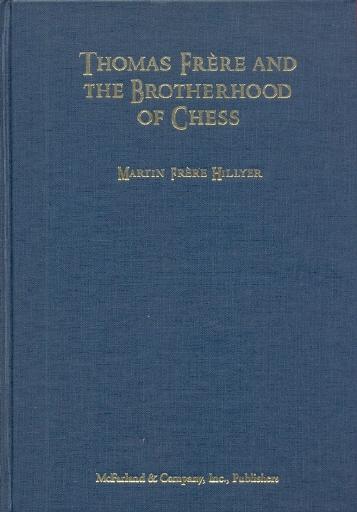
C.N. 3828 quoted readers’ suggestions regarding the identities of all the figures in the well-known New York, 1857 photograph, and now we note the following on page 42 of Thomas Frère and the Brotherhood of Chess by Martin Frère Hillyer (Jefferson, 2007):
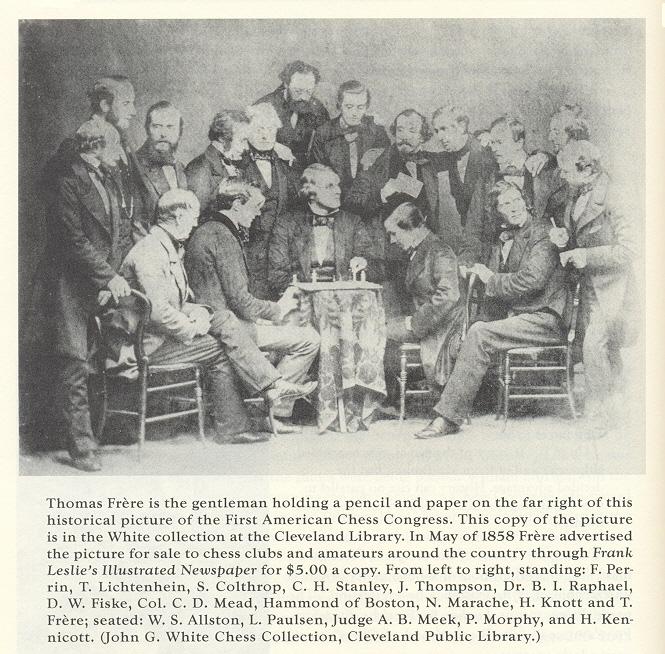
The author of this beautifully-produced hardback from McFarland & Company, Inc. is the great-great-grandson of Thomas Frère (1820-1900), who was a significant figure in US chess. In 1859 he brought out the first games collection on Morphy:
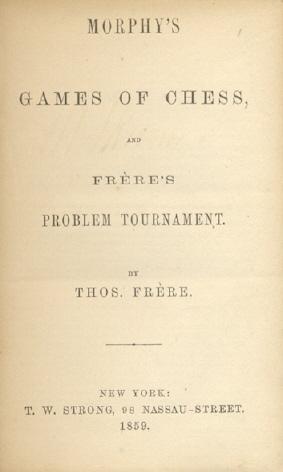
A particular feature of Thomas Frère and the Brotherhood of Chess is that it discusses the Morphy-Staunton controversy from an interesting new angle: the enmity between Frère and D.W. Fiske (pages 71-94).
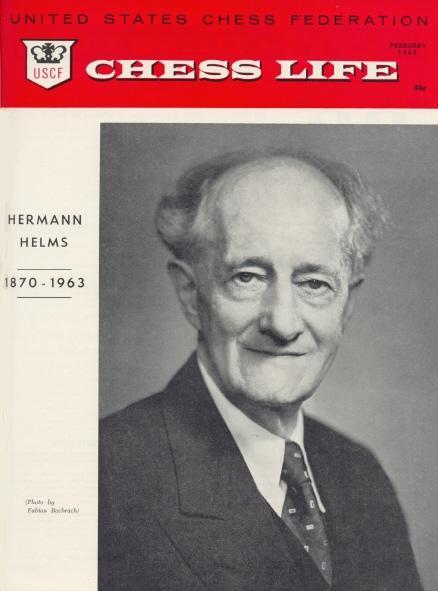
In the Chess Records feature article we have added an entry for the longest editorship of a newspaper column, on the basis of this paragraph in Hermann Helms’ obituary on page 32 of the February 1963 Chess Life:
‘Establishing a remarkable record for chess journalism, he began his column for the Brooklyn Daily Eagle in October 1893 and continued it decade after decade until the paper folded in 1955.’
Almost every biographical account of Helms’ chess career (his entry in Golombek’s Encyclopedia is one example) states that he edited the American Chess Bulletin from its creation in 1904 until his death in 1963, but is that so? In the last few years was he the publisher only? Page 41 of Betts’ chess Bibliography lists the editors as follows:
‘Hartwig Cassel (1904-1917); Hermann Helms (1904-1956); Edgar Holladay (1956-63).’
Below is the front cover of the first issue of the Bulletin
(June 1904):
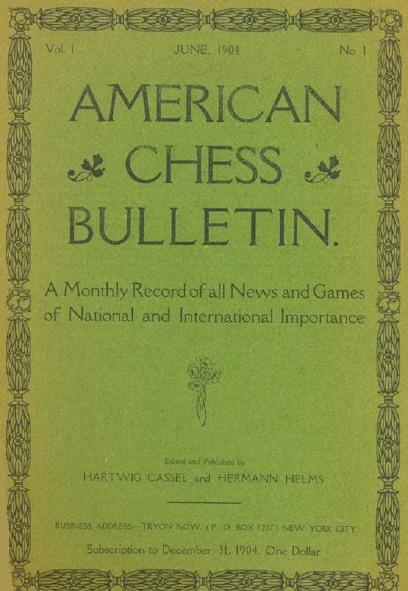
This photograph, taken at Kalamazoo, 1927 (the first meeting of the National Chess Federation of the USA), was published on page 152 of the September-October 1927 American Chess Bulletin:
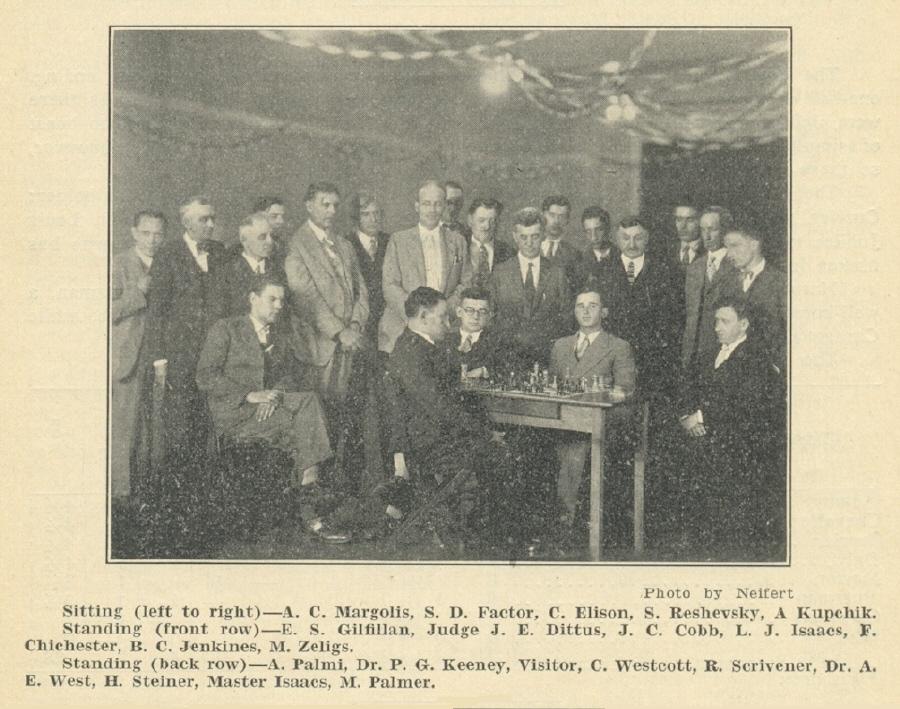
From pages 26-27 of the Chess Player’s Magazine, 1863:
Daniel Harrwitz/Frank Healey – Adolf Zytogorski/Harper‘The following game we give as an interesting novelty, on account of the manner in which it was played. Herr Harrwitz and Mr Healey having been matched against Messrs Zytogorski and Harper, it was arranged that each player should move alternately, without consulting his ally.’
1 e4 e5 2 Nf3 Nc6 3 Bc4 Nf6 4 Ng5 d5 5 exd5 Na5 6 d3 Nxc4 7 dxc4 h6 8 Nf3 e4 9 Nd4 Bd6 10 h3 O-O 11 O-O Bd7 12 Ne2 Nh5 13 Qd4 Qe7 14 Nbc3 Rae8 15 Be3 b6 16 Qd2 Qf6 17 Ng3 Qh4 (‘Too late, for [White] seeing the force of this move has prepared for it. Mr Z. is unable to obviate his partner’s oversight.’) 18 Nxh5 Qxh5 19 Bf4 Be5 20 Nxe4 Bxb2 21 Ng3 Qh4 22 Rae1
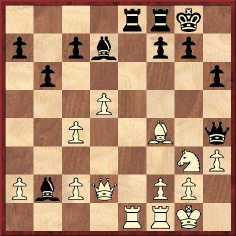
22...Bc3 23 Qxc3 Qxf4 24 Qxg7+ Kxg7 25 Nh5+ Kg6 26 Nxf4+ Kg5 27 Nd3 Ba4 28 f4+ Kh4 29 Kh2 Rxe1 30 Rxe1 Bxc2 31 Ne5 f6 and White gave mate in three moves.
The passage below appeared on page 8 of the Chess Review, September 1892:
‘London. A novel exhibition of simultaneous play took place recently at the private house of a chess enthusiast in the West End of London. On the occasion in question, Mr Lee and a first-class London amateur played simultaneously in partnership against eight opponents, three of whom were ladies. The two simultaneous performers walked from board to board, and moved alternately and without consultation, the amateur pedestrian making the odd moves for White and Mr Lee the even moves for White in each game. Several interesting and dashing parties took place, the King’s and Evans’ gambits being adopted in most cases and, after an amusing and well-contested encounter, the simultaneous partners were victorious by five wins to three. The whole performance proved very interesting to both players and spectators, and similar matches have been arranged for the future.’
Around the turn of the century Emanuel Lasker developed a penchant for tandem chess (most notably in exhibitions with Géza Maróczy). The photograph below shows him with Frank J. Marshall at the Rice Chess Club in New York:
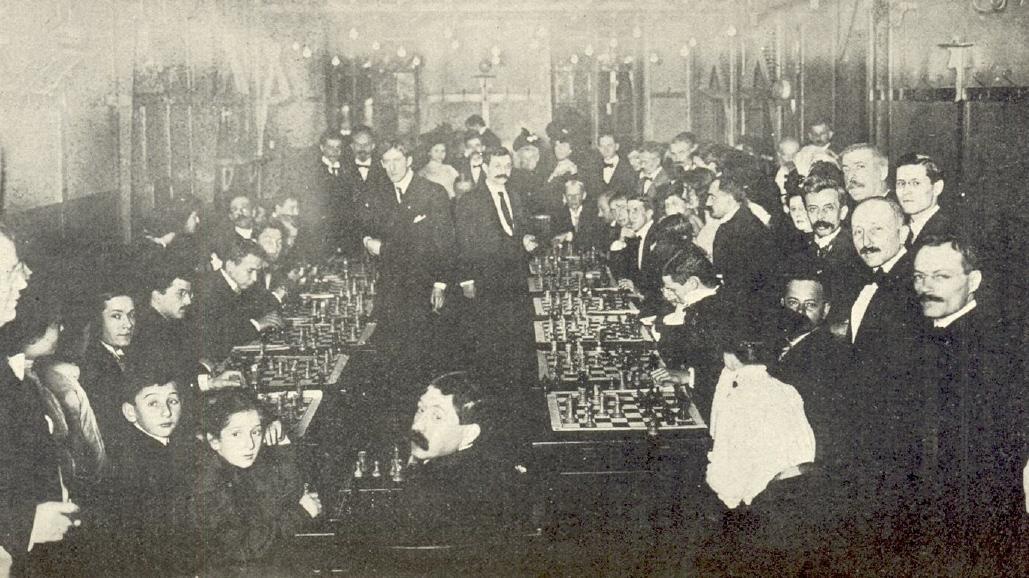
The caption (American Chess Bulletin, November 1906, page 218) stated: ‘Photograph of a tandem simultaneous performance, showing Dr E. Lasker and F.J. Marshall as partners against 16 players.’
Wanted: earlier occurrences of the use of ‘tandem’ in this chess sense. Other terms are ‘leap-frog chess’ and ‘partnership chess’. The latter was used on page 12 of the November 1908 issue of Lasker’s Chess Magazine when a game involving four amateurs was given.
In the following game, from page 23 of the Chess Weekly, 16 October 1909, ‘the players on each side made their moves alternately, without consulting’:
Leon Rosen/Louis Hein – Harold Meyer Phillips/H. Rosenbaum1 b4 d5 2 Bb2 e6 3 e3 Nf6 4 a3 c5 5 bxc5 Bxc5 6 d4 Bd6 7 Bb5+ Nc6 8 Nf3 Qa5+ 9 Nc3 Ne4 10 Qd3 O-O 11 O-O Bd7 12 Ne2 f5 13 Qb3 g5 14 Bd3 g4 15 Bxe4 fxe4 16 Ne5 Bxe5 17 dxe5 Qc7 18 Nf4 Rae8
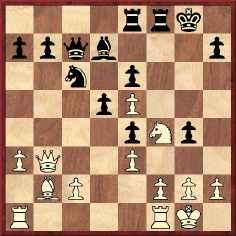
19 Qb5 Nd4 20 Qb4 Nxc2 21 Rac1 Rc8 22 Qd2 Qc4 23 Qd1 Rxf4 24 exf4 h5 25 f5 exf5 26 Rxc2 Resigns.
On pages 13-14 of its January 1910 issue La Stratégie reported that the previous month C. von Bardeleben and W. Cohn had given a 21-board display of tandem chess whilst also playing the following individual game sans voir:
Curt von Bardeleben (blindfold) – Wilhelm Cohn (blindfold)1 e4 e5 2 Nf3 Nc6 3 Bb5 Nf6 4 O-O Nxe4 5 d4 Be7 6 Qe2 Nd6 7 Bxc6 bxc6 8 dxe5 Nb7 9 Nc3 O-O 10 Re1 Nc5 11 Nd4 Ne6 12 Be3 Nxd4 13 Bxd4 c5 14 Be3 d5 15 exd6 Bxd6 16 Rad1 Re8 17 Qf1 Qh4
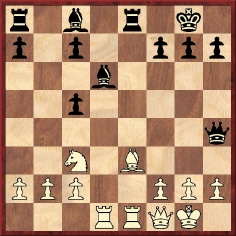
18 Rxd6 cxd6 19 Bg5 Rxe1 20 Qxe1 Resigns.
The French magazine included the annotations of Gunsberg, who mentioned that Black could have prolonged the game with 19...Ba6 20 Bxh4 Bxf1 21 Rxf1.
In the 1930s tandem chess gained in popularity. Page 66 of the April 1932 American Chess Bulletin reported on a 14-board exhibition (+10 –2 =2) at the Marshall Chess Club, New York by Reuben Fine and Fred Reinfeld. A game-score was given on page 320 of Reuben Fine by Aidan Woodger (Jefferson, 2004). For information about the ‘alternating blindfold simultaneous displays’ given by Alekhine see, for instance, pages 486-489 of Alexander Alekhine’s Chess Games, 1902-1946 by L.M. Skinner and R.G.P. Verhoeven (Jefferson, 1998) and pages 28-29 of Adventures of a Chess Master by G. Koltanowski (New York, 1955).
There were also joint displays by Tartakower and Znosko-Borovsky, as shown by the photograph below from page 287 of Alt om Skak by B. Nielsen (Odense, 1943):
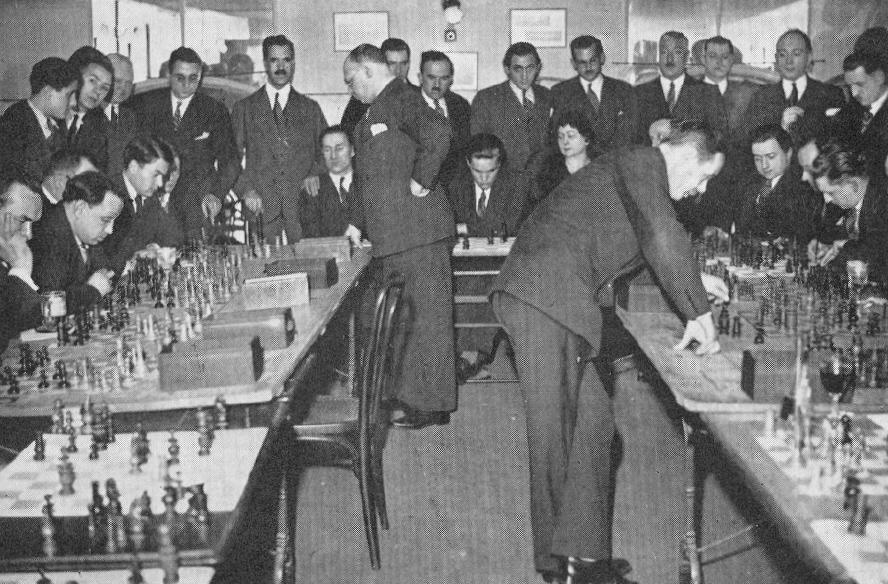
Below, in conclusion, is a specimen not of tandem chess but of a six-man partnership game, from pages 239-240 of the Chess Monthly, April 1880. It was an after-dinner occasion, and the players moved in the order indicated. Thus 3 d4 was Mason’s choice.
Wilhelm Steinitz/Philipp Hirschfeld/James Mason – Johannes Hermann Zukertort/Henry Edward Bird/Leopold Hoffer1 e4 e5 2 f4 exf4 3 d4 d5 4 exd5 Qh4+ 5 Ke2 Bd6 6 c4 c5 7 Nf3 Bg4 8 Nc3 Na6 9 Ne4 Qe7
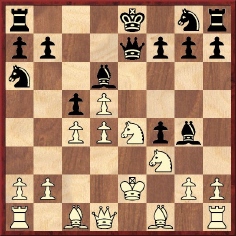
10 Kf2 Qxe4 11 Bd3 Bxf3 12 Qa4+ Kf8 13 Bxe4 Bxe4 14 Re1 Nf6 15 Bd2 g5 16 b4 cxd4 17 c5 Be5 18 Qa3 Ng4+ 19 Kg1 Ne3 20 Bxe3 dxe3 21 b5 Nc7 22 c6+ Kg7 23 Qe7 Rhe8 24 Qxg5+ Kh8 25 d6
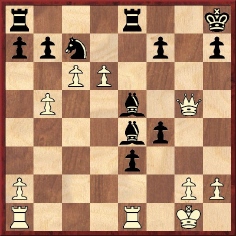
25...f6 26 Qh4 Nxb5 27 d7 Rg8 28 a4 Bxg2 29 axb5 Bxc6+ 30 Kf1 Bxb5+ 31 Re2 f3 32 Ra2 fxe2+ 33 Rxe2 Rad8 34 Qb4 Bxe2+ 35 Kxe2 Rxd7 36 h4 Bd4 37 h5 f5 38 h6 f4 39 Kf3 Re8 40 Ke2 f3+ 41 Ke1 e2 ‘and Black mated after a few more moves’.
John Hilbert (Amherst, NY, USA) draws attention to the following news item on page 114 of the May 1911 American Chess Bulletin:
‘The many readers of the chess department of the Brooklyn Daily Eagle, which flourished from October 1893 to November 1907, when it was discontinued by the management, will no doubt be glad to learn of its resumption on 23 March last, under the editorship of Hermann Helms.’
We have amended the Chess Records entry accordingly and are now seeking other nominations for the longest (continuous) editorship of a newspaper column.
We have now acquired a copy of the original (hardback) edition of the problem book, published in New York in 1960. It was entitled not 101 Chess Problems for Beginners but 101 Chess Puzzles and How To Solve Them. As regards authorship and editorship, the title page was entirely accurate:
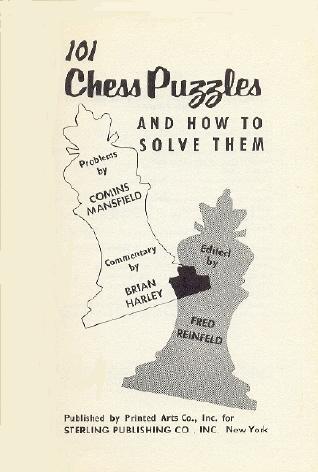
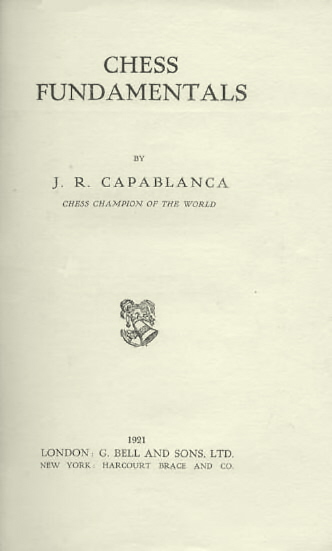
Books are still being published which claim that Capablanca made a ‘boner’ in Chess Fundamentals (see, for instance, C.N. 3830), and we therefore reproduce C.N. 2011, which set out the complexities of the affair. Illustrations from various editions of the Cuban’s book have been added here.
In Chess Fundamentals Capablanca published the following as ‘Example 8’:
Page 64 of Comprehensive Chess Endings, volume 4, by Y. Averbakh and I. Maizelis (Oxford, 1987) comments on the position as follows:
‘Here the only move not to win is 1 g5? in view of 1...g6. Curiously, in the 1st edition of his Chess Fundamentals, Capablanca asserted (he later corrected this) that 1 f5 also did not win in view of 1...g6 (he left the analysis of the variation to the reader). Capablanca gave the solution 1 Ke4 Ke6 2 f5+ Kf6 3 Kf4 etc. But it is precisely by 1 f5! that White wins more quickly.’
Critical analysis of this position appeared on page 268 of the November 1949 Magyar Sakkvilág, where Dr Jenő Bán claimed to correct Capablanca by demonstrating a win by 1 f5 g6 2 fxg6 Ke6 3 g5 (Not 3 Ke4 Kf6 4 g7 Kxg7 5 Kf5 Kf7, with a draw) 3...Ke7 4 Ke5 Kf8 5 Kf6 Kg8 6 g7 Kh7 7 g8(Q)+ Kxg8 8 Kg6 and wins. These moves were repeated by Fred Reinfeld on page 279 of The Joys of Chess (New York, 1961), in a chapter entitled ‘Boners of the Masters’. The ending was also discussed in Chess Life & Review in June 1971 (page 306), December 1971 (page 704) and November 1972 (page 549). The last of these was a contribution from Paul Keres:
‘Furthermore, I got interested in the position from Capablanca’s Chess Fundamentals, given in Dec./71, page 704. I have not got the English edition of the book, but in the German translation (1927 and 1934) the statement is that 1 P-B5 does not win because of 1...P-N3. The Russian translation of the book, on the contrary, states that 1 P-B5 also wins, Black’s best counterchance being 1...P-Kt3. My impression is that Capablanca originally made the mistake, thinking the position was a draw, but later, noticing his error, did make a correction. Of course that is only my impression – I have no facts to prove it.’
So did Capablanca commit a ‘boner’ by claiming that 1 f5 would not win and, if so, did he correct it? All editions of Chess Fundamentals published in the United Kingdom (including the 1921 original) seem to state: ‘In the above position White can win by 1 P-B5 [our italics]. Black’s best answer would be P-Kt3.’ The Cuban adds that White ‘cannot win by 1 P-Kt5, because P-Kt3 draws’ and later writes that ‘White can win, however, by playing 1 K-K4’. This is followed by a number of variations.
UK edition, 1921, page 12
G. Bell and Sons, Ltd. were the UK publishers, but the US edition was published by Harcourt, Brace and Company. The original 1921 US edition reads:
‘In the above position White can win by 1 P-B5. Black’s best answer would be P-Kt3 draws. (The student should work this out.) He cannot win by 1 P-Kt5, because P-Kt3 draws.’
US edition, 1921, page 14
The first two sentences obviously contradict each other, and in the second sentence the word ‘draws’, which is absent from the UK edition, is syntactically incorrect. Did the US typesetter accidentally add the word, perhaps led astray by the similarity to the way the final sentence ends?
To eradicate the contradiction, one of the first two sentences in the US version needed to be changed. Remarkably, the solution adopted – in the mid-1930s US edition, which was published with a new Preface by Capablanca dated 1 September 1934 – was to put: ‘In the above position White can’t win by 1 P-B5. Black’s best answer would be P-Kt3 draws.’
US edition, mid-1930s, page 14
To summarize, although it was suggested by Averbakh and Maizelis that Capablanca a) wrongly wrote that White cannot win with 1 f5 and b) later corrected the text to ‘can win’, in reality the change (made in the mid-1930s US edition) went in the opposite direction: ‘can’ was altered to ‘can’t’. Why and by whom?
Further complications arise concerning the German edition (published in 1927 by Walter de Gruyter & Co. under the title Grundzüge der Schachstrategie), from which Dr Bán was working.
For some reason it stated:
‘In der Stellung (Beispiel 8) kann Weiß nicht durch 1 f5 gewinnen; die richtige Erwiderung wäre 1...g6 (der Leser möge dies selbst durchdenken). Weiß kann auch nicht gewinnen mit 1 g5, weil Schwarz g6 antwortet.’
German edition, 1927, page 8
The words nicht and auch have no equivalent in the original English-language editions. More confusion occurred when the 1979 reprint of the German translation amended the position to justify the nicht: White’s king was put on e3 and Black’s on e7.
Do readers know of any other pre-1934 editions, in any language, which state, ‘White can’t win by 1 f5’?
From page 35 of Lasker’s Chess Magazine, November 1907:
‘The comparison of chess to warfare is old and trite, yet with the changing conditions of modern times new viewpoints are continually presented. The submarine and the airship have become factors to be reckoned with and analogy to the pieces on the chessboard is obvious. In how far this analogy holds good no less an authority on both fields than Mr Rice tells in a Washington journal:
“War is becoming more and more a game of chess, a struggle of one mind against another, rather than a physical fight in which brute force wins”, said Isaac Rice, a submarine boat builder at the Shoreham last night. “The introduction of the submarine, the war balloon, which will eventually develop into a flying machine, the searchlight, with all their powers of disclosing the movements of the enemy, and the telephone into modern warfare makes the struggle between opposing forces as open as the moves on a chessboard. The element of surprise which has entered into former wars, to a large extent, is gradually being eliminated. Each commander will know the position of the forces of the enemy, and the victory will go to the man who best lays his plans to checkmate the other.
This reduction of warfare more and more to an exact science and the use of submarine and airships will undoubtedly make the forces employed against each other smaller. Huge armies are hard to handle and to provision. Undoubtedly, too, the sacrifice of life will be less. Battles are fought and won at the army maneuvers as now conducted without the firing of a shot. Judges decide that one force has placed itself in a position to annihilate the other. Generals in actual warfare will recognize this fact, too.”’
We should like to discover the exact source regarding the ‘Washington journal’. C.N. 2823 (see page 316 of Chess Facts and Fables) quoted a paragraph by Emanuel Lasker about Rice’s military prophecies, from page 67 of The Community of the Future (New York, 1940).
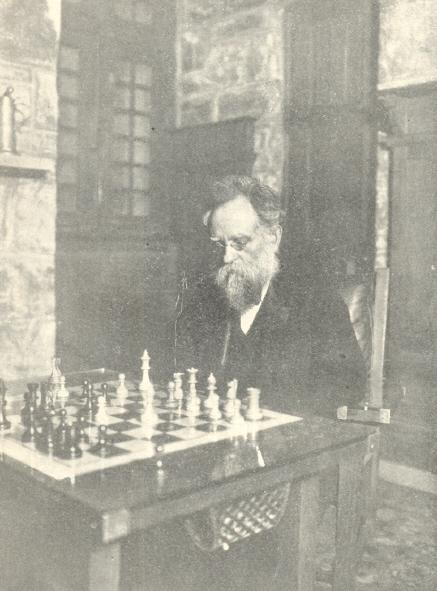
Isaac Leopold Rice
Luc Winants (Boirs, Belgium) has forwarded to us the photograph of Rudolph Valentino (1895-1926) referred to in C.N. 4758. It comes from the collection of Daniël De Mol, to whom we are also grateful.
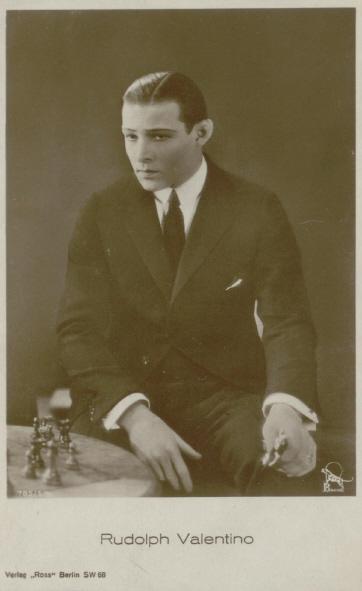
Below are some lesser-known instances of chess longevity, gleaned from English-language periodicals:
‘Threescore and ten is the age allotted to man. When we see this span of time exceeded, it is frequently as if Providence had been indulgent in order to leave us a little longer those whom we can ill afford to lose. We have men of science, statesmen in the full vigour of manhood and freshness of intellect, and also chessplayers who seem to receive “odds” from Time. Many chess writers have tried to demonstrate that the practice of our game is a sure means for longevity, but we think that a good constitution to start with, and a judicious economy of the same combined with the modern hygienic principles, are the sole secret and the real elixir of life. Mr Charles Murton is probably the oldest chessplayer living. The members of the City of London Chess Club have celebrated his 90th birthday in a becoming manner, by a dinner given to the old gentleman, who is deservedly a great favourite with the Club ...’
‘Death of Centenarian Lady Chessplayer. – The Liverpool Daily Post of 15 November records the death of Jane Lady Carew, at the age of 104. The deceased lady was the grandmother of the present Lord Carew. She was married the year after Waterloo, and had been a widow nearly 50 years. Her active memory included the whole of the reigns of George IV, William IV and Victoria, the period during which George III could not control the affairs of Great Britain and, of course, the opening of the present era. ... Until she had passed her 100th birthday she played a capital game of chess ...’
‘Surgeon-Major H.B. Hinton, of Adelaide, is the oldest living British officer, and is probably the oldest chessplayer in the British Empire. He was 103 on 7 March. Major Hinton served in the Maharatta War of 1843 [sic]. Physically he is pretty well, considering that through an accident he is disabled from walking; but his intellect and memory are excellent. He has been a member of the Adelaide Chess Club for many years.’
‘I think Tasmania may fairly claim the honour of having the oldest chessplayer in the Commonwealth. Last year, on my annual vacation, I had the pleasure of playing several games with the Rev. Charles l’Oste, of St Helens, on the East Coast. He will be 101 in January, next, and still retains all his faculties, is keenly interested in all current events, and dearly loves a good game of chess. He is, I fancy, the oldest living graduate of Cambridge.’
‘The Manhattan Chess Club (NYC) mourns the death of Louis Zeckendorf. Mr Zeckendorf was 99 and, indeed, was less than a month short of reaching his 100th anniversary. Prior to his membership in the club, where he was a favorite with all because of his quite incredible vigor and enthusiasm, he had carried with him an interest in the game that dated back to long years of fantastic adventure in the pioneer days of the old South and Southwest. Among his favorite memories was a game played and won against no less a personage than the Confederate General Longstreet, a victory which the winner accounted as lucky because of his opponent’s preoccupation with Civil War matters.’
(From the Family Search website, however, we note in the 1880 US census an entry for a Louis Zeckendorf of Manhattan who was then aged 40.)
‘Mr Henry Hudson of Canterbury, who recently celebrated his 100th birthday and received congratulations and good wishes from the King and Queen, drew with Howard Staunton at the odds of a rook, at the age of eight, and was a well-known British player in his day.’
Chess Notes began 25 years ago, in January 1982. It did not, however, appear in 1990-92, which means that January 2007 marks only a silverish anniversary.
| First column | << previous | Archives [29] | next >> | Current column |
Copyright 2006 Edward Winter. All rights reserved.